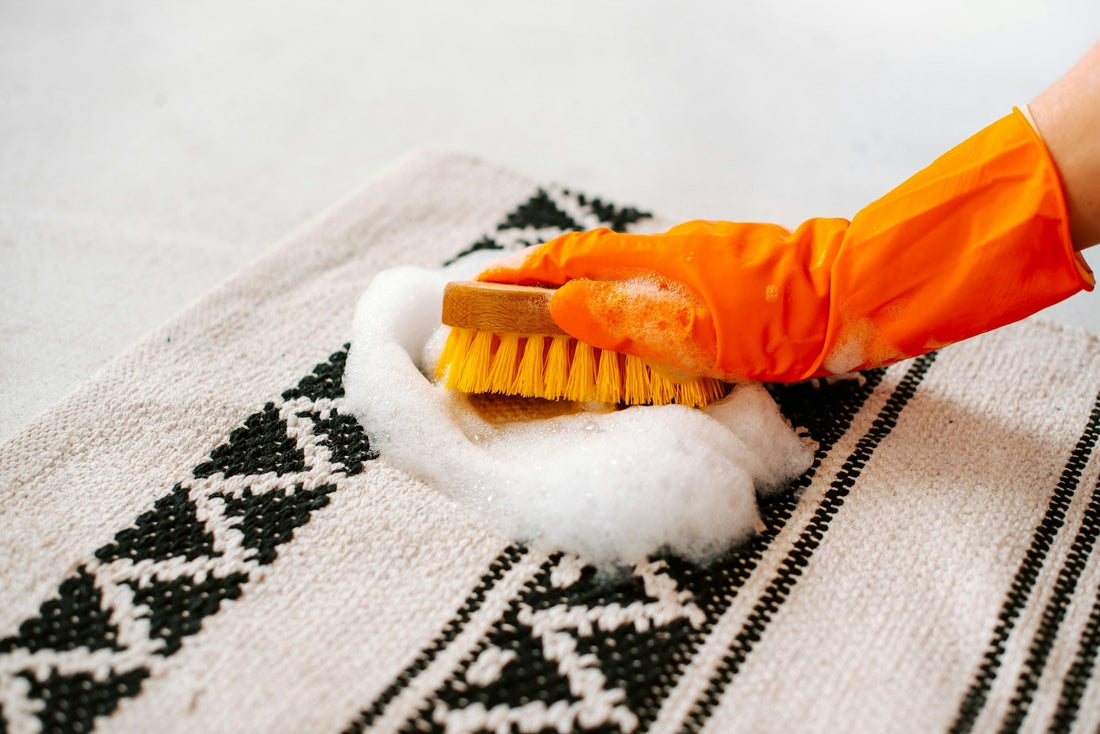Turkish handwoven rugs are more than just floor coverings. For many homeowners, they’re a meaningful part of the home filled with pattern, color, and craftsmanship that stands out. These rugs are known for their character and charm, often passed down through generations or brought home from special travels. Over time, regular use, weather changes, and even indoor air quality can wear them down.
The signs aren’t always obvious right away. At first, you might just notice the colors don’t pop like they once did, or the rug feels a little rougher underfoot. Learning to spot early changes before they get worse can help keep your rug looking its best. And when it comes to caring for Turkish handwoven rugs, professional cleaning makes a noticeable difference once you know what to watch for.
Understanding The Need For Professional Cleaning
No matter how careful you are, rugs in everyday homes deal with a lot. Dirt from outside gets tracked in, even with the best intentions at the door. Tiny bits of dust settle into the fibers every day, especially in high-traffic areas like living rooms and entryways.
A Turkish handwoven rug may not show signs of wear right away. These pieces are built tough. But once dust and debris settle deep into the wool or cotton, they start grinding against the weave while people walk on it. Over time, this friction can weaken the structure and dull the appearance.
Here’s what happens when too much buildup gets stuck in your rug:
1. Colors lose their brightness, even in rugs that aren’t very old
2. Designs start to look faded or blurry
3. The texture feels flat or dusty instead of soft and full
4. Corners and edges curl or start to lose shape
5. Areas with foot traffic appear darker than others
One Frisco family noticed their hallway runner wasn’t the same shade of red it used to be. They assumed it was the lighting, but after it was professionally cleaned, it turned out that deep dirt had muted the colors over time. Once cleaned carefully, the rug looked several shades brighter again.
Professional cleaning isn’t just about washing the top. It’s about safely removing what's embedded inside without damaging the patterns or dyes. These rugs are often handmade and use natural materials, so they need a skilled hand to get them clean and keep them intact.
If your rug seems a little dull, doesn’t feel as smooth, or is harder to clean through regular vacuuming, it may be time to give it a closer look. Catching these signs early helps protect your rug and keeps bigger problems from building up.
Visual Indicators Your Rug Needs Cleaning
Turkish handwoven rugs are known for bold patterns and deep colors, so even small changes in their look can be easy to spot. While natural fading happens over the years, changes that happen quickly or affect only one part of the rug may be worth addressing.
Here are some visual signs to pay attention to:
1. Dull or faded colors: Bright reds, blues, and golds losing their punch might mean dirt is covering up their shine
2. Stains that won’t budge: If basic cleaning doesn’t lift a spot, it might be deeper in the fibers than you can reach
3. Unusual wear patterns: Thin-looking areas or uneven coloring may come from ground-in dirt or improper cleaning attempts
Rooms with lots of light can make these changes stand out. One homeowner in Frisco had a Turkish rug under their dining table where the center looked darker than the edges. That darker area turned out to be a mix of food spills and foot traffic erosion. After a professional cleaning, the difference between the center and edges was barely noticeable.
In some cases, what you can see isn’t the whole story. If a rug looks faded or stained, chances are there’s more happening within the weave that needs to be carefully removed before long-term harm sets in.
Sensory Indicators to Watch For
Visual signs help, but it’s not all about looks. Your other senses are just as important in spotting problems. A change in texture, smell, or how the rug feels underfoot can be another way to spot when something’s off.
These are some sensory signs that your Turkish handwoven rug may need professional cleaning:
1. Musty or sour smells: Mildew, pet dander, or moisture buildup can all cause odd scents when they linger in the deeper layers
2. Texture changes: Rugs that feel rough, brittle, or overly stiff may be packed with hidden grime or might be slowly wearing out
3. Increased shedding: A bit of fuzz is normal, but if your rug seems to be falling apart with gentle vacuuming, that’s a sign of fiber stress
Summer in Frisco can bring humidity, and even if your rug doesn’t feel wet, it might have absorbed moisture over time. One homeowner found their rug smelled off even though it looked fine. A deep cleaning uncovered old moisture trapped beneath the surface that needed proper treatment.
When your rug feels different underfoot or the air around it isn’t as fresh, consider those changes your first important clue. They’re often early warnings that something deeper is happening inside the fibers.
Why Professional Cleaning Makes a Difference
Lots of people try to clean their rugs at home with regular carpet tools or online tips, but Turkish handwoven rugs weren’t made for harsh machines or strong chemicals. These rugs are a craft product, made from natural fibers and often dyed with natural colors.
Professional cleaning protects the heart of what makes your rug special. It involves:
1. Gently lifting dirt trapped deep inside without pulling fibers loose
2. Reawakening the vibrancy of the original patterns and shades
3. Spotting and handling tiny damage before it spreads
4. Helping the rug keep its shape and firmness through the years
A trained rug tech understands how the materials respond to moisture and tools. That’s important in making sure colors stay rich and edges don’t fray. Unlike wall-to-wall carpeting, these handwoven pieces demand a slower, more informed approach.
If your rug lives in a busy space filled with kids, pets, or visitors, chances are it experiences more wear than you think. A pro cleaning keeps it in better condition and saves you from the risks that come with do-it-yourself fixes.
Keeping Your Turkish Handwoven Rug in Top Shape
Waiting until there’s a big problem is never the best approach. Staying a step ahead with scheduled routines avoids major wear and expensive repairs later on.
A few good habits can make a big difference:
1. Spot check every few months if the rug is in a high-traffic area
2. Rotate the rug to even out foot traffic and fading
3. Schedule professional cleanings sooner than later if the rug sees regular use
Even in less-used spaces, rugs collect dust and subtle wear. An annual or biannual inspection helps prevent small buildup from turning into permanent damage.
Turkish handwoven rugs carry not just color and beauty but stories and heritage. Whether it’s a gift, a find from a special trip, or just your favorite accent at home, it deserves the kind of attention that keeps it lasting. Simple regular care and the occasional professional touch go a long way in helping your rug stay a proud part of your space for years to come.
Every rug has a story. Keeping it clean helps make sure that story doesn’t fade away too soon.
Enhance your living space with beautifully maintained rugs that keep their charm year after year. For expert care tips and a wide selection of handcrafted options, explore our collection of Turkish handwoven rugs and let RugTown help you preserve the character and beauty of your favorite pieces.

